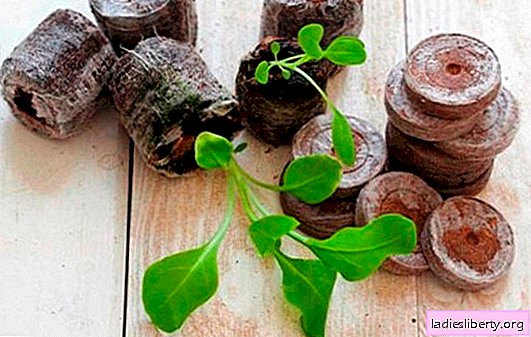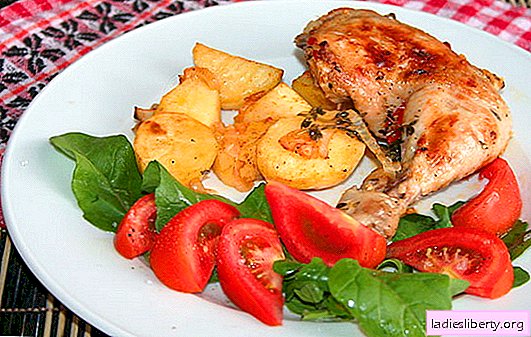
Watermelon is a sweet berry with flesh melting in the mouth, which is loved by both adults and kids. For this reason, they are trying to grow it in all regions of our country. How can I grow a watermelon in a greenhouse, given the fact that he loves heat very much?
A good harvest of these delicious berries, with a large number of micro, macrocells and vitamins, is not too difficult to grow even in the northern regions, only a quality greenhouse is required.
Necessary conditions for watermelons
To grow a large crop of ripe watermelons in a greenhouse, you need to fulfill several simple but important conditions. These plants should be grown in protected buildings, at a temperature of at least 18 degrees Celsius.
After sowing seeds, you can’t lower the air temperature, it is best if it is kept at 28-35 degrees, these conditions are easy to maintain in protected buildings.
For this reason, the greenhouse needs to be equipped with a heating system.
It is necessary to organize regular watering, timely top dressing and tie up the lashes of plants.
Why is it better to grow in a greenhouse?
Watermelons require high-quality, nutritious soil, suitable humidity and air temperature.
The roots of the plant, which penetrate to a great depth, do not withstand the close location of groundwater, in this area the root system begins to rot.
Return frosts that occur in the northern regions can instantly kill seedlings.
A damp summer, of course, will not destroy the crop, but it will noticeably reduce the palatability of the grown fruits. The berries will be watery, low in sugar.
Which is the best greenhouse to choose?
The frame and cover of the protected structure can be chosen any.
Cozy plants feel even under the cheapest film. Just do not forget that a high greenhouse is required. Watermelon shoots rising along the trellises will be able to avoid the effects of cold air coming from the street.
The design and coating of the greenhouse should be free of tears, cracks and even small cracks. Watermelons are very sensitive to fungal diseases, in the spring it is necessary to disinfect the soil and treat the greenhouse frame with a solution of copper sulfate or Bordeaux mixture.
Greenhouse preparation and growing watermelon seedlings
It is easy to grow watermelon seedlings in a greenhouse, but the structure must be prepared in advance. It needs to be inspected and all damages eliminated, the plant illumination, irrigation system and heating checked. If it is not possible to heat the greenhouse, then sowing seeds for seedlings is possible only at the end of April or in May.
Need cover materials used in unexpected cold snap, suitable plastic film, thick paper, simple rags.
In order for the watermelons to develop correctly, it is necessary that the greenhouse meets several requirements.
1. For any gourds, greenhouses cannot be used - their width and height are insufficient for the normal development of plants, they require a high greenhouse. The shoots of this plant in nature are spread over the surface of the soil, and in the greenhouse, due to lack of free area, they must be suspended. For this reason, the higher the height of your greenhouse, the faster watermelons will develop. Best if the height exceeds 2 meters;
2. Watermelons in closed structures will grow normally next to other crops, but for them this is not the best option. Southern plants withstand the high temperature and drought without consequences, but very humid air in the greenhouse (exceeding 60%) can lead to the appearance of fungal diseases on plants. Therefore, it is advisable to grow watermelons in a separate greenhouse;
3. Watermelon requires soil with an acidity of about pH 6.8-7, the soil should be fertile, well-drained, but not too greasy.
What kind of watermelon is best for growing in a greenhouse
Of the many modern greenhouse varieties of watermelon, it is better to choose with fruits of a small size (no more than 2-3 kg), they spit very quickly.
These are such famous varieties as - Ultraearly, Siberian, Cinderella, Twinkle.
From sowing seeds to picking ripe berries, it takes about 80 days and although the berries are light in weight, they grow very tasty. Trying to grow in a greenhouse, varieties with a long growing season is not advisable, you can get no fruits from them at all.
Planting seedlings
In the second decade of April, it is time to sow watermelon seeds. It is necessary to prepare pots of 10 cm in diameter and a soil mixture (wood ash and potassium sulfate are added to the fertile garden soil).
1-2 seeds soaked in advance are planted in cups, after which the pots are transferred to a warm place.
Although these seeds can hatch at a temperature of 17 degrees, indoors it is necessary to maintain the temperature within 25-35 degrees during the day, and 18-20 degrees at night - in such conditions, high-quality seedlings will grow.

During the development of seedlings, it is advisable to carry out 1-2 dressings with complex fertilizer, the first time this is done 12-14 days after sowing the seeds, the second 10 days after the first.
As the seedlings grow, the distance between the honey pots is increased to give freedom to the plants.
When 3-5 real leaflets are formed on them, they can be transplanted to a permanent place in the greenhouse, usually this takes 30-35 days.
If there is heating in the greenhouse - planting of seedlings can begin in mid-May, if it is not heated - you need to wait until the air temperature in the street rises to 20-25 degrees.
Seedlings are planted on pre-prepared ridges, making them 40-50 cm wide and 20 cm high, after 40-50 between plants. The humidity level and the height of the greenhouse are important, it is necessary to provide for the height of the structure within 1.8-2 m, and maintain the humidity at 60-70%.
Plant care
The watermelon has long shoots - for this reason they need to be tied. Scourge yourself (like cucumbers) will not cling to the ropes. For this reason, during the daily inspection of the greenhouse, it is advisable to wrap the grown ends of the shoots counterclockwise around the trellis. Watermelon in the greenhouse is formed into one stem, all processes and inflorescences are removed at a height below 40 cm.
2 months after transplanting, the plants bloom, first male inflorescences grow, and after 10 days female ones. It is important to carry out artificial pollination at this time, in the south you can simply open the window through which insects penetrate. In the northern regions, this work must be done manually. Tear off the male inflorescence and conduct it with stamens inside the female flower.

If the flower is pollinated - the ovary will begin to bend and grow down, if this does not work out - the inflorescence will stretch up. When small watermelons grow to the size of a plum, you need to count 5-7 leaves above it and cut off the end of the shoot. It is advisable to leave only one fruit on one shoot, if you leave several berries on one lash, then the berries will grow small. When the fruits grow to the size of a tennis ball, they are placed in nets that are attached to the trellis, without this the lashes will fall from the growing weight of the fruits. About 30 days after the ovary appears, the first berries can be picked.
Watermelon really does not like when there are weeds near it, for this reason you need to regularly remove them from the greenhouse. If the berries appeared at the base of the whip, there is no need to tie them up, but laying them on the soil you need to adjust the wooden plank to prevent the fruits from decaying.

Top dressing and watering
It is believed that watering is not needed for this culture, but in reality, watermelon, although it tolerates drought, needs to be watered. Moisture is most required for him - before the formation of inflorescences and in the first period of development of the ovaries. For watering, it is better to use warm water, spending a bucket of water for 8-10 watermelon bushes. When the fruits grow to the size provided by varietal characteristics, watering must be completed.
Simultaneously with regular watering, it is convenient to feed the plants. To do this, dissolve 2 tsp. microfertilizers, 1 tsp potassium sulfate, 1 tbsp. superphosphate and 1 tablespoon azofoski in 10 liters of water. In total, during the season you need to do 4 dressings, approximately 500 mg of solution is consumed for each plant. Fertilizers are poured 20 cm from the bush of watermelon at 1 top dressing, with the following at a distance of 40 cm.
For irrigation use only warm water, it is advisable to water immediately after feeding. It is impossible for water to fall on the leaves and stalks of watermelon, water must enter the plant through the roots. To attract pollinating insects to the greenhouse, watermelon greens are sprayed with a solution of sugar or honey, or honey plants can be planted nearby.
When will the crop ripen?
After the berries have reached the required size, their stalks will dry out, and the fruit's bark will begin to shine, these signs say that the watermelon has ripened. The sonorous sound during a slap or a light blow on the peel also indicates that the fetus is fully ripe. Size is not an indicator of ripeness, there are varieties whose fruits cannot grow more than 1 kg (for example, such a variety as "Twinkle").
Remember that it is advisable to collect and leave the seeds of their good varieties for planting for the next year (in no case do not collect seeds from F1 hybrids, they will not be able to grow a normal crop of sweet berries). Preparing seedlings from your own seeds ensures that plants will better resist disease.











